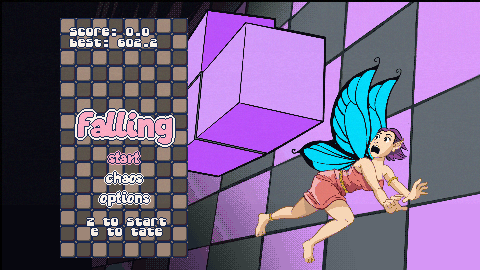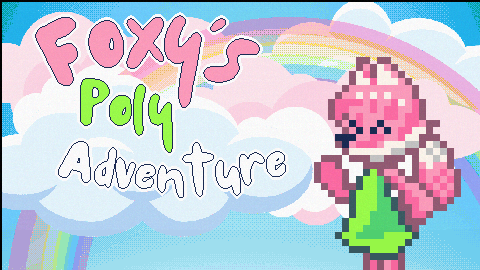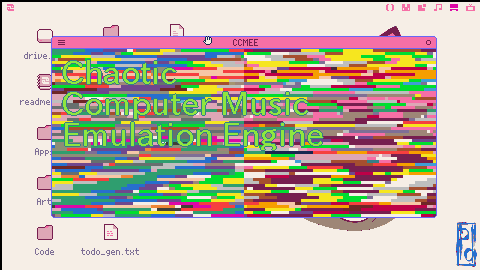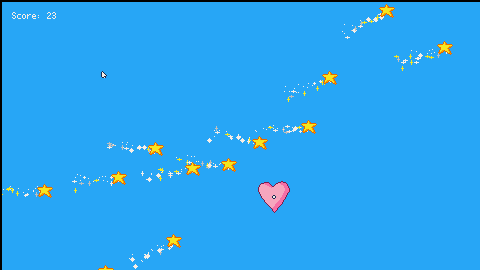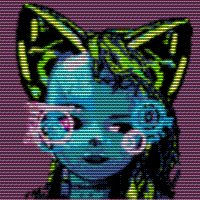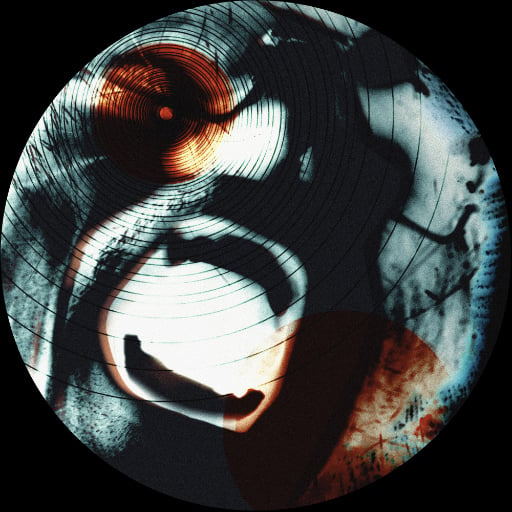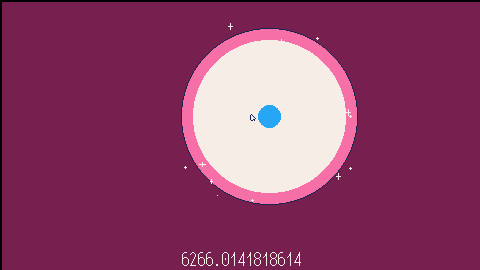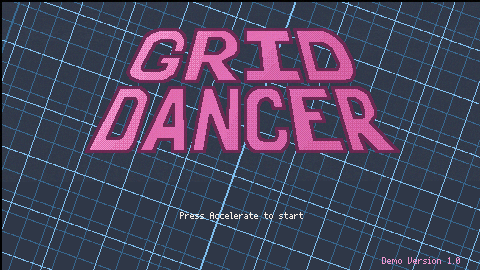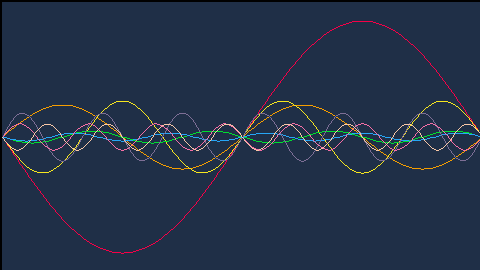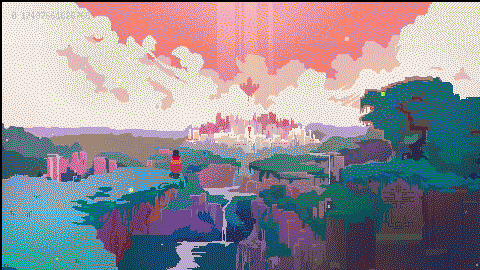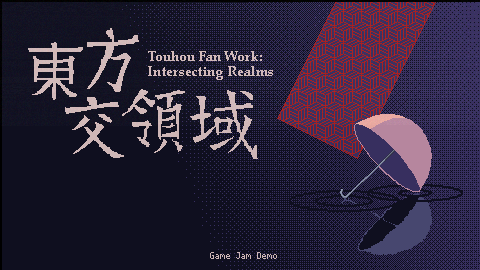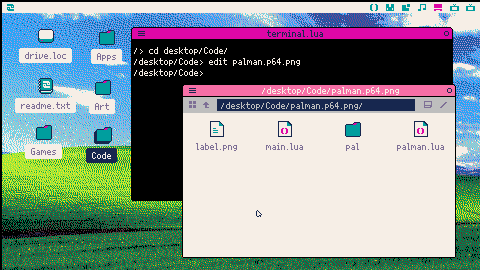Z to switch players / confirm
X to undo / back
F to change language
G to pause / reset
This is a port of Atlus' 1989 game Puzzle Boy, released in the US as Kwirk. While it is copyrighted, it's a Game Boy game that is only sold on the secondary market and has been for over 30 years, outside of some levels being used in SMT3.
This was the first sokoban I played, back when it was new and I was a child. Coming back to it, I could still remember levels I cleared as a kid and feel proud of my young self for getting through so much of it.
This port does not include Solo Trial, which is 99 random levels played for score (I might add it later), but it does feature robust options including a bonus soundtrack to counter the monotony of the game's only song, English and Japanese languages, and the ability to switch between Puzzle Boy and Kwirk, if you have nostalgia for a tomato with sunglasses and a mohawk.
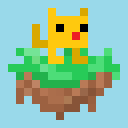

.jpg)
WASD, ZQSD, or right stick to move the fairy. Arrow keys, dpad, or left stick to move the tromino. Z to confirm.
This game was originally made in under 24 hours between 2025/3/21 - 2025/3/22, but then expanded on. I think it's a lot of fun.
Very much inspired by sylvie's approach to game design, Artemis' Minesweeper, and Neltris. Developed thanks to prompts from Washburnello & NiHiL on Discord.
Key Art:
Penny Drake
Fonts:
Lapsus Pro by theguybrush
Anarchist by DamienG, based on a font by Igor of Anarchy
v1.33 Okay, I've actually been updating this a bit but haven't said anything. I think it's at a point now where I want to say Hey, this is a big update, even though it's technically a small update compared to yesterday's quiet update.
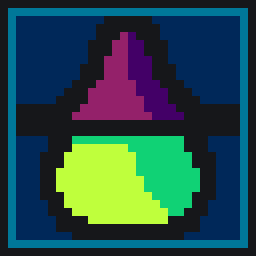
Fonts:
Lapsus Pro by theguybrush
Anarchist by DamienG, based on a font by Igor of Anarchy
le petit cochon by Nantia
This game was worked on during the "Finish Your Game" Jam 2024. It's definitely not finished yet.
I have big plans. Consider this the Extended Jam Edition. Considering the cart size, this is
probably the only version that will hit lexaloffle.
When I was 9, I was obsessed with Nintendo and wanted to make my own games. Using sheets of graph
paper, I constructed Mario-style levels with what I imagined were near impossible jumps and tons
of spikes. That's really where it all started for me and this is my love letter to the genre.
This game would not exist without countless incredible games, most notably Mega Man, Super Mario


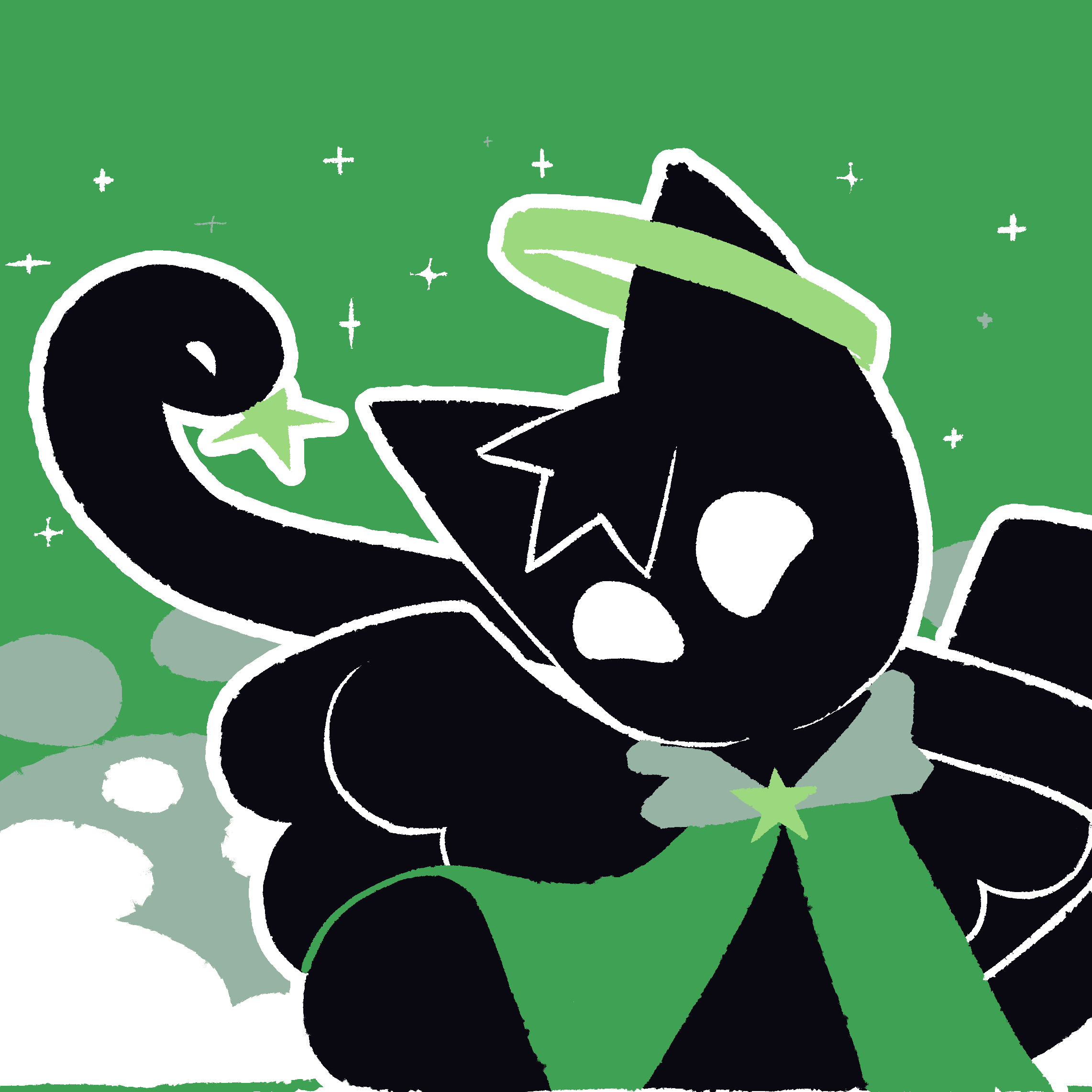
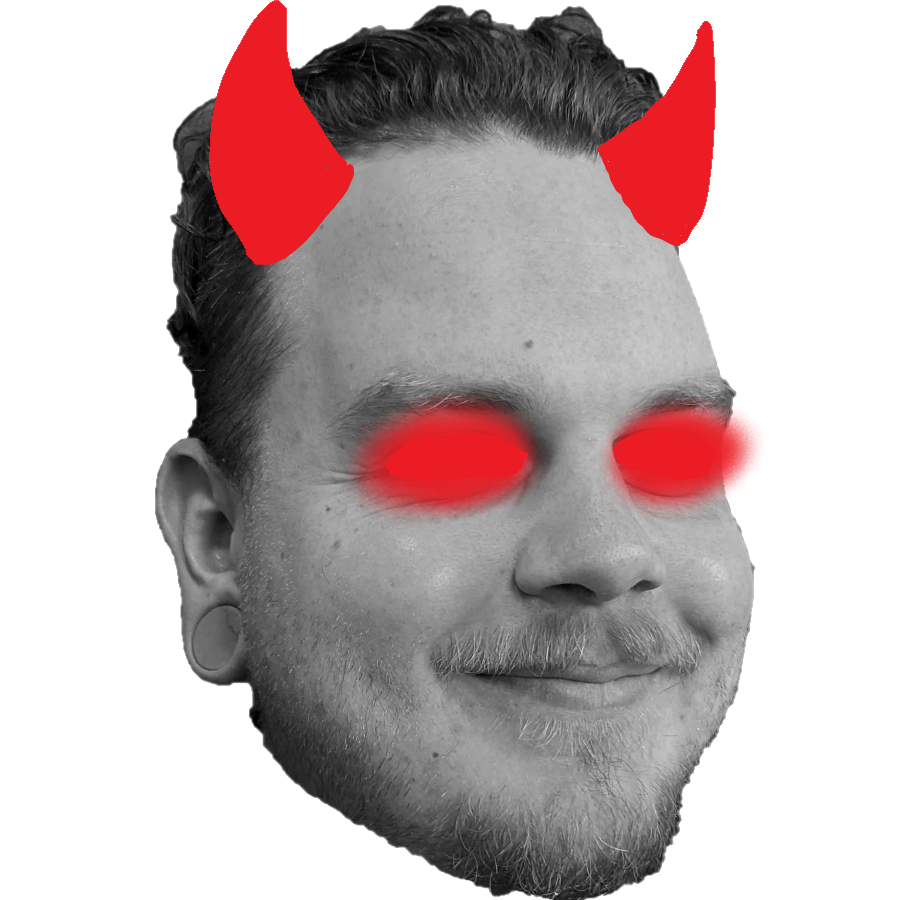
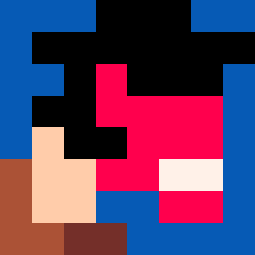
This is a music composition tool of sorts. Pressing letter keys "composes" music and pressing space
saves the loop for use elsewhere if you like.
There is no random generation here. Everything except the backing drum beat is 100% user-generated.
The process itself is the chaos.
This cartridge came about after talking with someone in the blind community and realizing vision is
required for most of my work and feeling that needed to change.
v1.1 Set some of the instruments to retrig which fills things out a bit
v1.2 Visual feedback, dialed back flute, added button inputs
This is a really simple tool for converting single 256x256 spritesheets into 256 16x16 sprites. Just put the full image in the slot in 0.gfx you want to have your gfx file named as (eg, a full spritesheet pasted into sprite 1 of 0.gfx would generate 1.gfx).
The code is super simple and can be modified to accommodate other sizes with a little work.
.jpg)
Left / Right to turn
X to accelerate
Z to brake
Q to return to the main menu
If you release accelerate, turn, and hit accelerate again, you'll perform a drift. Drifting is necessary for most ships.
I highly recommend playing with a controller.
Player ship is a prerender of a 3D model by CarmD on Sketchfab.
Programming by Maya Zimmerman
Art by Maya Zimmerman
Music by Skitch & Maya Zimmerman
Font is Railgun by Chevy Ray
Special thanks to White-hole for giving me guidance on how R4 handles drift physics
v0.1 This cart was made over 52 hours between 5/17/24 - 5/19/24 for the Goblin Bunker May 2024 Game Jam. It's just the very beginning of something I was wanting to do, a 2D racing game in Picotron.

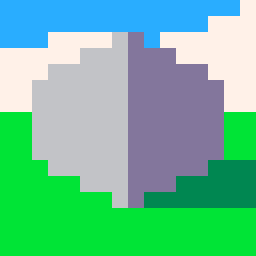



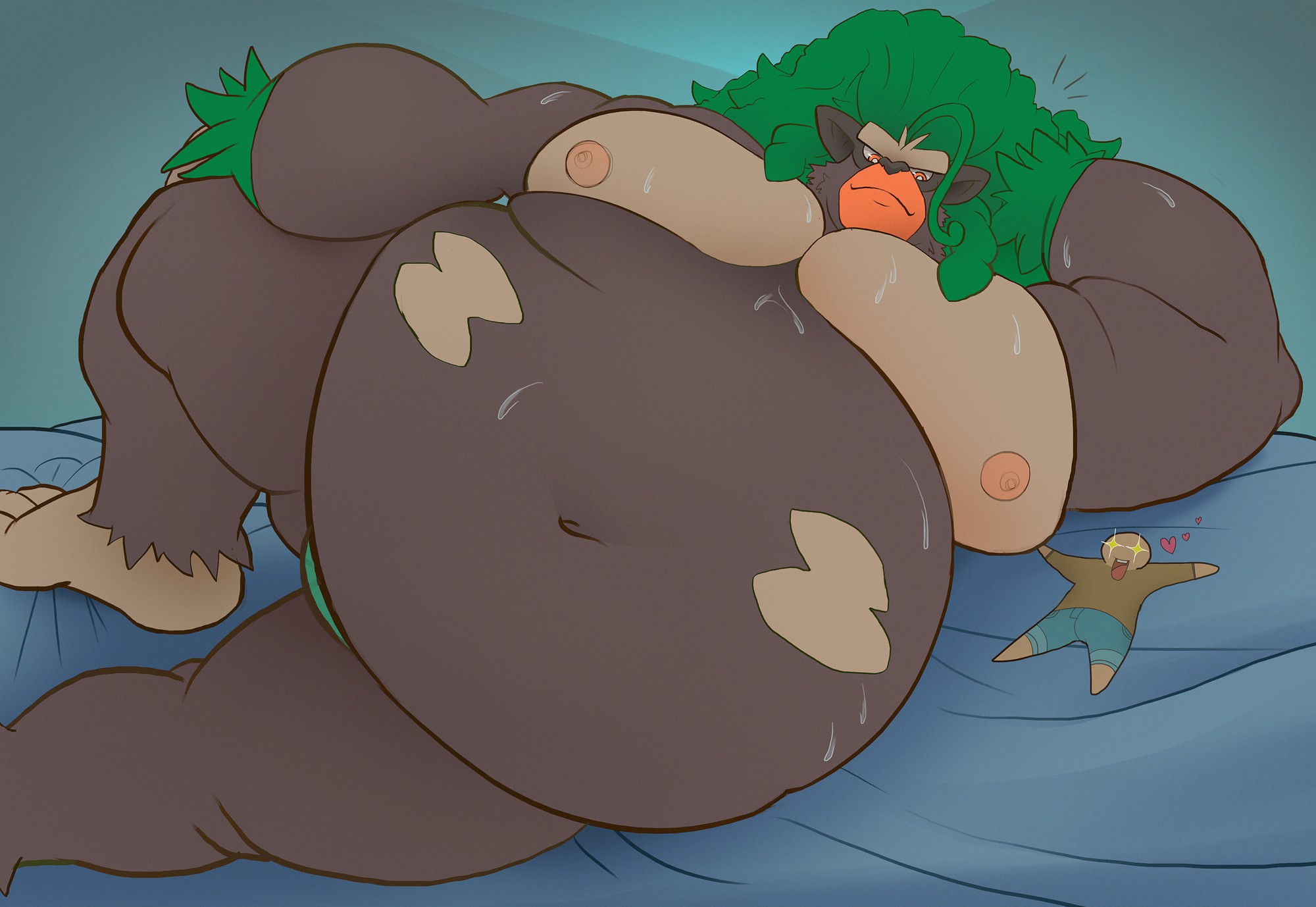
This is an audio-visual representation of the harmonic series. The sine waves are in size and
frequency, integer ratios of 1,2,3,4,5,6,7,8, using bends to get as close to the exact tones as
possible. Every time the sine waves hit a peak or valley, they play the associated note in the
harmonic series and they oscillate in the same ratio.

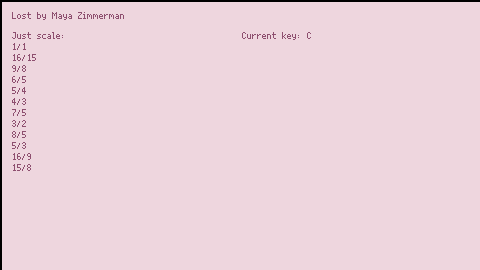
From the moment I saw tuning as a parameter in the synth doc,
I knew I had to get just intonation into Picotron.
So I did.
There is code in the cart to copy into your cart, with instructions
on how to call the function with different musical keys (including a
dynamic key that changes according to channel 0!)
The cartridge includes a song I composed ages ago, which you are
welcome to use for any project you might like. :)
v1.1 Okay, so, the effect I achieved before was very close to just intonation but was not just intonation. I've since achieved true just intonation (you will probably not be able to tell the difference but the math is extra good now, I promise) and this updated cart reflects that.
This was made over the course of March 14 - April 19, 2024, for the Bunkertron Jam and Picotron Game Jam.
Z to shoot
Left shift or F to focus
X to reflect (with meter)
Game Design by Jayce McCue and Maya Zimmerman
Programming by Maya Zimmerman
Art by Jayce McCue
Music by Maya Zimmerman
Story by Jayce McCue
Tested with a Super Famicom controller and presumably works with other controllers as well.
For the true LoLK experience I was going for, set lives to 1 in game.lua.
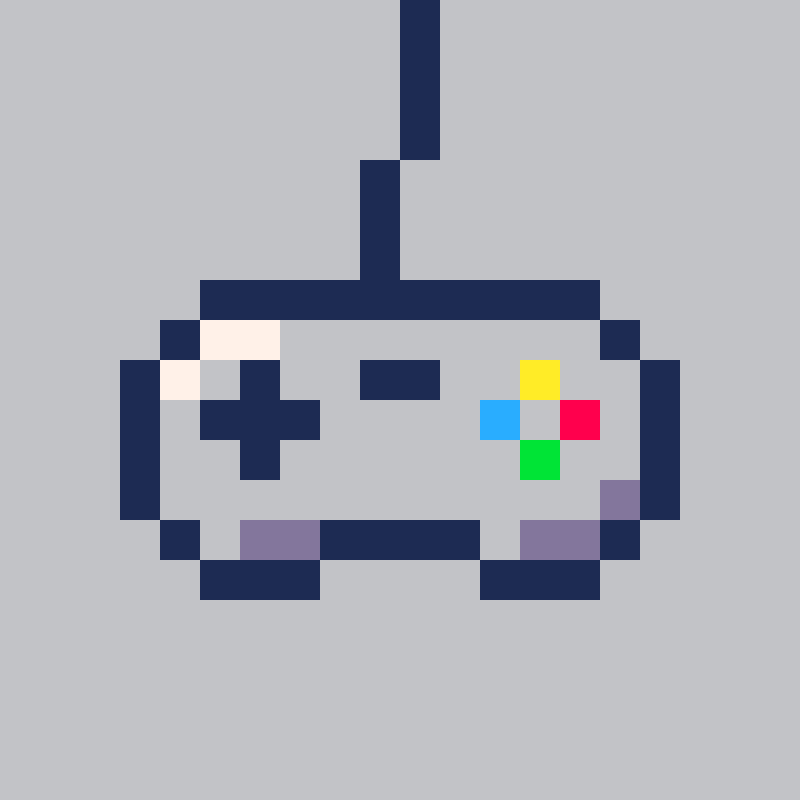
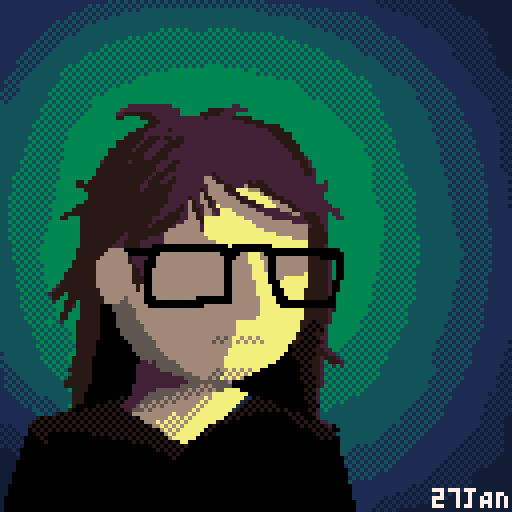

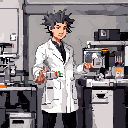
So, this is some really simple code to use in your carts to easily load .hex palette
files on the cart. Check out palman.lua on the cart to see how it works.
v1.01 Changed a value to allow reading from .hex files created in Picotron.
v1.1 Added a notify message that the file was not found if the file was not found,
without crashing the cart.
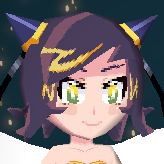

This was made mostly between pico-8 and picotron concurrently (saved in a text document) over the last month. It was really just putting the finishing touches on it once picotron was released.
Puzzles 3, 44, 45, 46, & 47 were guest contributions by Taichi on Discord.
I've learned so much from so many people but I must give a special shoutout to Krystman, whose Lazy Devs tutorials on Pico-8 were invaluable to learning the language.
v1.1 Added sfx and keyboard support
v1.11 Whoops needed to do just a little bit more
v1.12 Changed the instrument used for the music thanks to advancements in wavetable technology. It's much more true to my inspiration, Mysterious from Mario Paint.




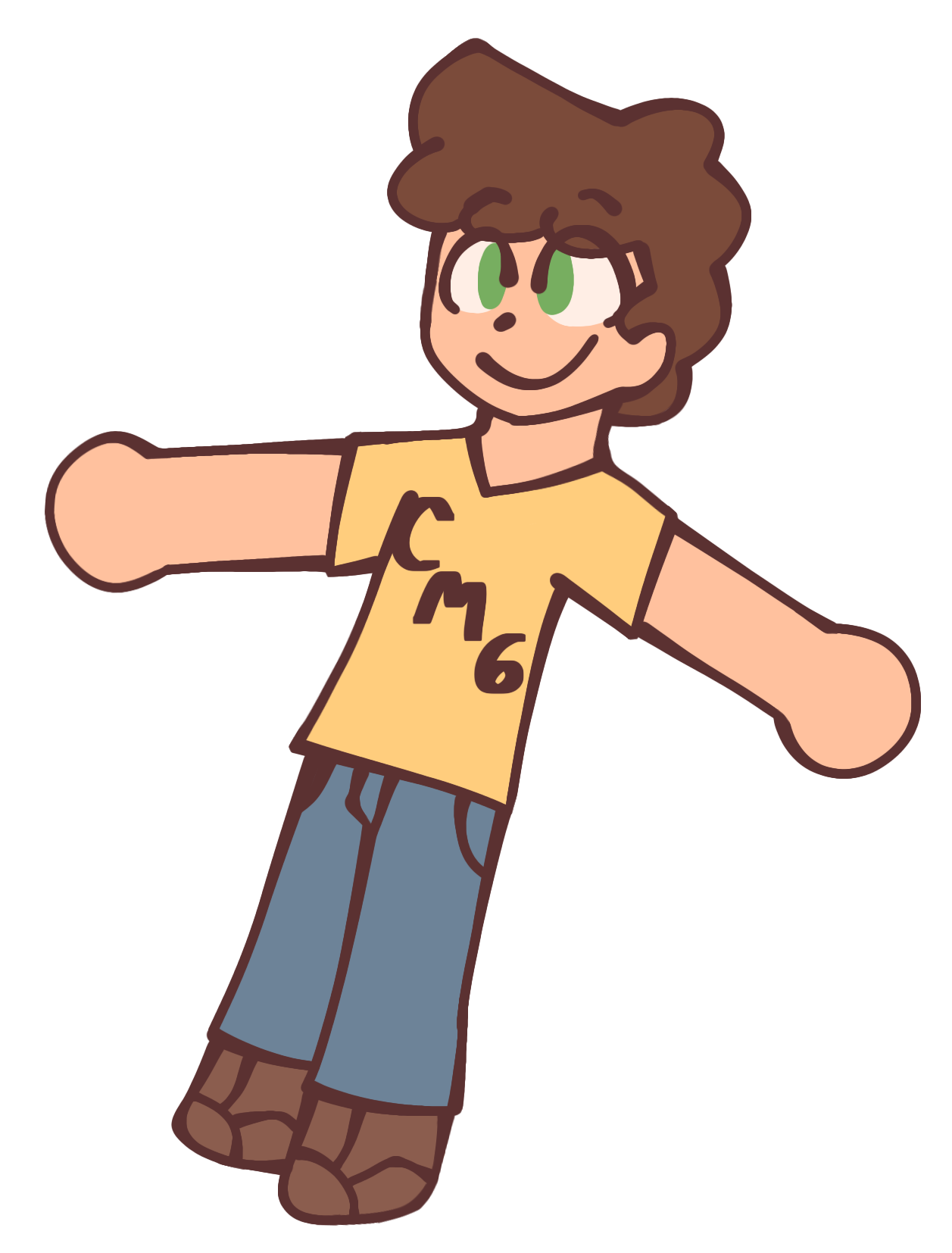
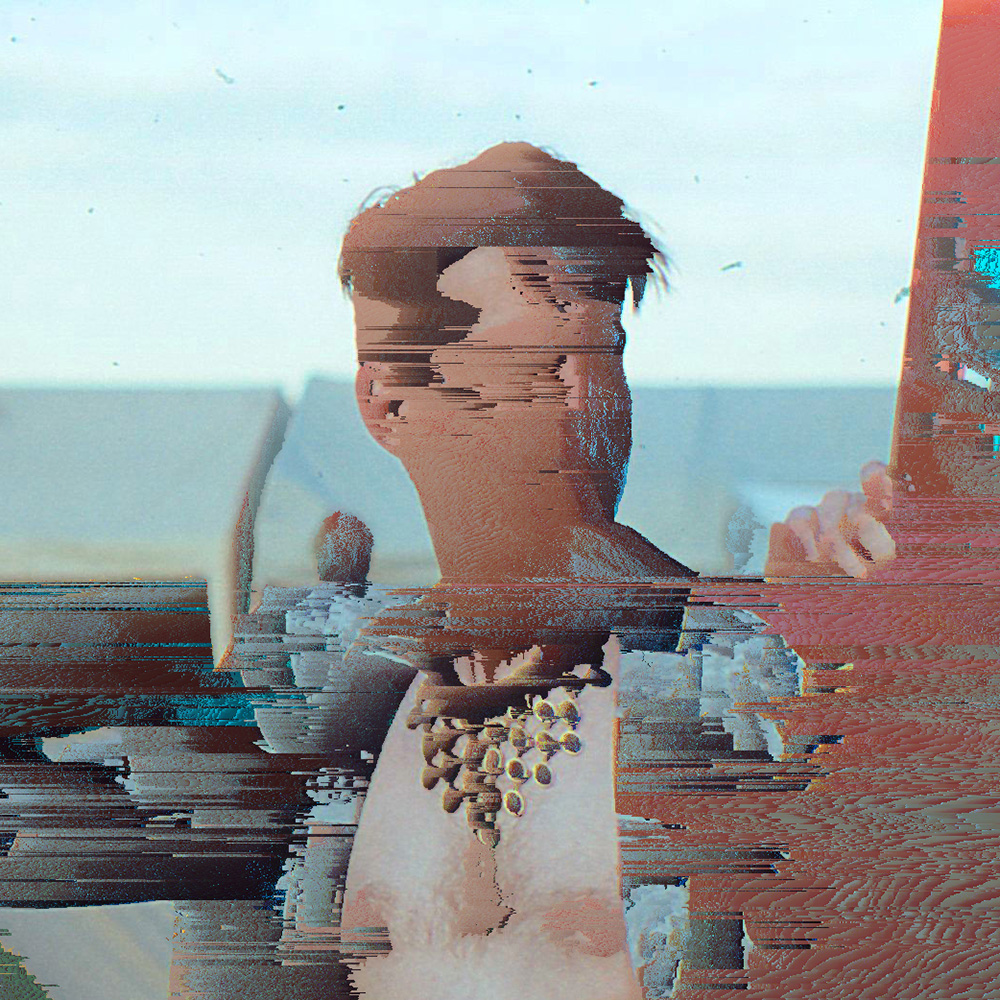






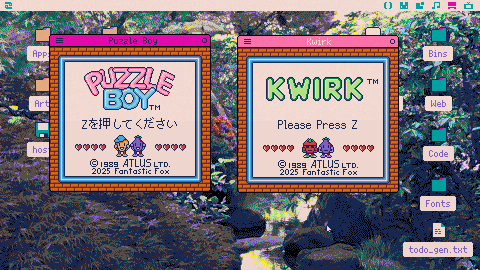
 4 comments
4 comments
